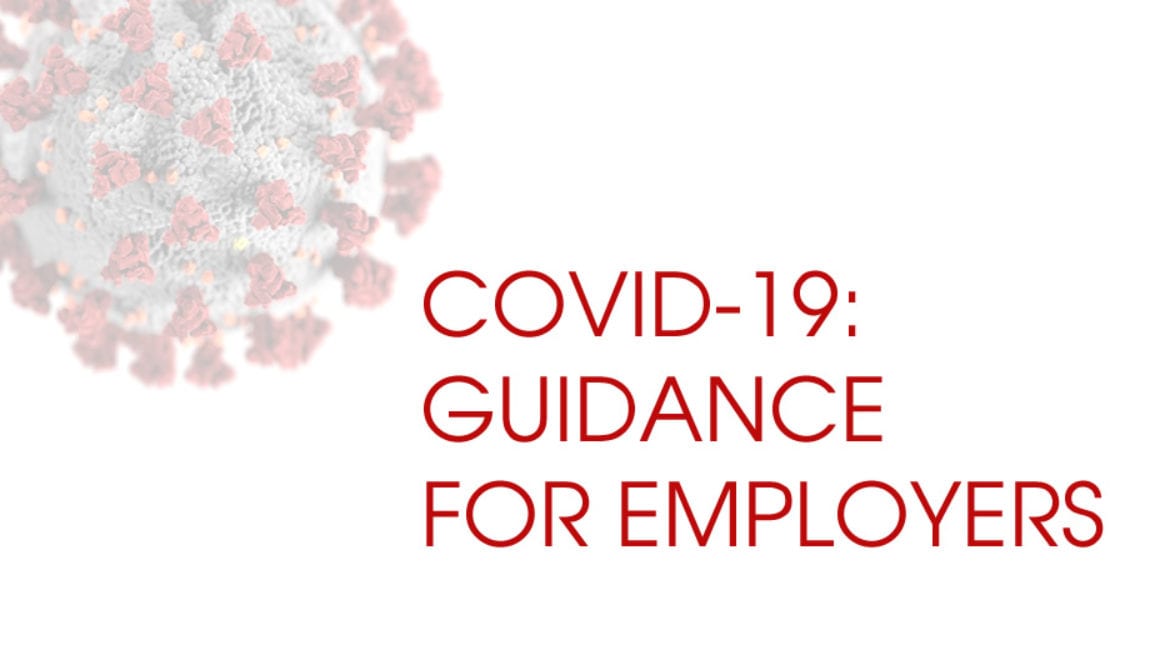COVID-19: GUIDANCE FOR EMPLOYERS
As we all know, the COVID-19 (Coronavirus) pandemic has had a significant impact on employers and employees all over the world. Businesses have been forced to close their doors to comply with stay-at-home orders, and as a result, employees have been impacted by reduced hours, temporary furloughs, and even layoffs.
Industries that are part of the essential infrastructure guidance issued by the Department of Homeland Security, are permitted to remain open, while taking precautions to keep their employees and their customers safe and healthy. Essential businesses are still required to enforce social distancing and take other steps to prevent transmission of COVID-19.
Still, with more people staying home and some consumers having to cut costs, your business may be slower than usual. This leads to some of us having to make difficult personnel decisions. So, what do you need to know as you are faced with these decisions?
If your business has been financially impacted by the current pandemic, and you are considering a reduction in force, you essentially have three options: reduced schedule, furlough, or layoff.
A reduced schedule consists of reducing an employee’s work hours, and only paying them for hours worked. This is easier for non-exempt/hourly employees, but there are federal and state laws which dictate minimum salary requirements for exempt employees. Be sure to check your state’s requirements before making any changes to an exempt employee’s status. Employees may be able to file for unemployment benefits due to a reduced work schedule.
A furlough is a temporary, usually unpaid, leave of absence. Furloughs are generally used as a cost-saving measure, with the intention of having the employee return to work after a designated period of time. During a furlough, the employee retains their seniority, their health insurance, and other benefits. Note that according to your state’s regulations, you may be required to pay out an employee’s earned wages and accrued vacation time on their last day worked, even if the furlough is temporary. Employees may also be eligible to file for unemployment benefits during the furlough period.
A layoff is generally considered to be a reduction in force. It should be tied to a restructure or position elimination, and not related to an employee’s performance. Employers should be careful not to use a “layoff” as a reason for terminating a poor performing employee. If needed, the business must be able to show a viable reason for the position elimination, and the layoff must be handled lawfully in order to prevent any future claims. Layoffs are treated as terminations under the law, and as such, all final pay requirements apply. A laid-off employee is generally eligible for unemployment benefits.
If you own or run a business with 100 or more employees and are planning to lay off more than half the workforce, be sure to check your requirements under the federal Worker Adjustment and Retraining Notification (WARN) Act. Even if your business does not qualify under the requirements for the federal WARN Act, several states have their own “mini-WARN” laws that may apply. Be sure to check your state’s requirements.
Lastly, it’s important you familiarize yourself with the ‘Families First Coronavirus Response Act‘ which goes into effect on April 1, 2020, and applies to businesses with less than 500 employees. This new law offers paid sick leave benefits (up to 80 hours) and paid emergency leave benefits (up to 12 weeks) to employees affected by COVID-19, including but not limited to self-quarantine orders and school closures. You are also required to post a notice (email is fine for those employees who are telecommuting). The notice must be posted and distributed prior to April 1st.
As the regulations are changing and updating rapidly, it’s important to check federal and state guidelines before making any important personnel decisions. The Department of Labor offers an FAQ page which is updated regularly.
If you need assistance implementing any employee related changes and/or have questions about the laws and how to maintain compliance, feel free to contact your HR Business Partner at People Person, Inc. We are here to assist small and mid-sized businesses through this pandemic and beyond.
